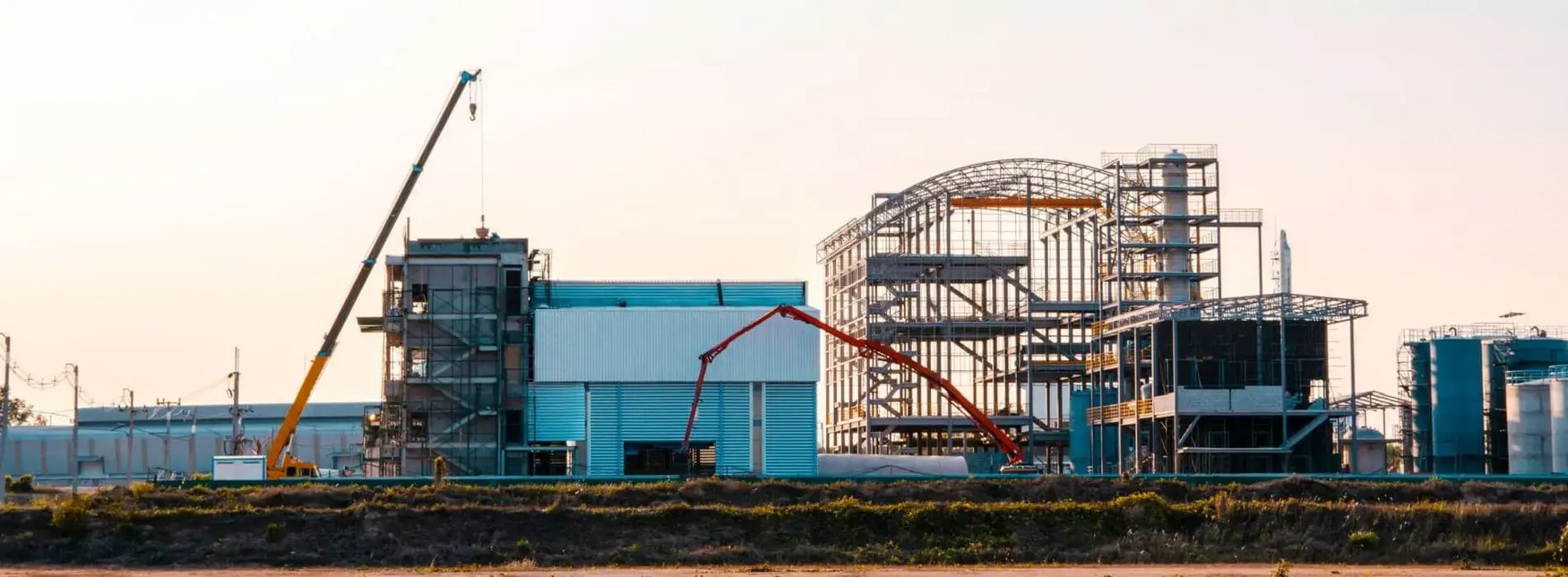Making Manufacturing Smoother With Better MEP Design

Picture your manufacturing facility running smoothly like a well-oiled machine. No unexpected downtime. No energy bills that make your eyes water. And a workplace where your team feels comfortable and productive. Doesn't that sound ideal?
Well, it's not just a dream. Effective MEP design can make this a reality. MEP stands for mechanical, electrical, and plumbing; these serve as the core systems on which your manufacturing facility relies for ease of operation. From the power lighting up your workspace to the HVAC systems keeping everybody at ease, MEP systems are vital in ensuring your manufacturing facility operates successfully.
Curious to know how proper MEP systems can work for your organization? Then, read on!
Understanding MEP Design Challenges in Manufacturing
MEP systems may not sound like a big deal, but they matter a lot in manufacturing. When a part fails, such as your electrical systems, that could be an operations-crippling setback. So, it's best to understand the potential challenges you may encounter in MEP design.
Complex Requirements
Manufacturing facilities are unique environments with specific needs that can make MEP engineering a complex task. The vital issues are heavy machinery, hazardous materials, and high demand for regulatory compliance.
Heavy machinery can be a real beast. It can stress the MEP systems with its generated heat and vibrations that will affect performance and lifespan. Establish safety mechanisms that can prevent accidents and environmental contamination in handling hazardous products. Manufacturing facilities need to comply with a long list of OSHA and local building codes, which make designing these facilities more complex.
Feeling overwhelmed? Consider calling the pros like Vaultas IT consultants. They've got some useful tricks up their sleeves - advanced simulation tools and data analytics. These tools will help in modeling the MEP systems under any operational conditions, finding out what could go wrong, and how to optimize performance.
Integration with Production Processes
You must carefully integrate MEP systems with manufacturing layouts, workflows, and equipment to ensure optimal performance. Where do you put those electrical outlets? How about the HVAC vents? The MEP systems should also be designed so that different types of manufacturing equipment, such as precision manufacturing equipment, are taken care of.
Poor integration of the MEP systems results in inefficiencies, downtimes, and safety hazards. Early involvement of MEP engineers is a necessity when designing the manufacturing facility.
Energy Efficiency
Energy efficiency has become one of the prominent and key concerns in today's manufacturing scenario. The effective reduction in energy consumption may lead to great cost savings and help the environment as well.
MEP systems play a crucial role here. The selection of efficient HVAC equipment and lighting fixtures are good examples. In a similar vein, optimization of the controls of the MEP systems is also called for to ensure energy use is very efficient.
Best Practices for MEP Design in Manufacturing
Incorporating excellent MEP design involves preparation on your end. Here's what to do:
Know Your Needs Inside and Out
Before you begin designing, you need to understand your manufacturing facility's needs. What are your particular challenges? What are your goals for the MEP system? A needs assessment helps ensure that your design aligns with your overall goals.
Follow Industry Standards and Codes
Industry standards and codes are in place to ensure safety and maintain compliance. These guidelines provide proven best practices for designing and operating MEP systems. You'll minimize risks like injury and reduce downtime while keeping in line with regulations.
Leverage the Power of Technology
Modern MEP design relies heavily on technology. 3D modeling and simulation tools allow you to visualize your MEP systems in detail, identify potential conflicts, and optimize designs. These tools provide information for decision-making and may prevent expensive mistakes.
Plan for the Future
Your manufacturing facility will likely change over time. Designing with flexibility and scalability in mind will help your MEP system grow with and adapt to the changes that the future will bring about. That may include expansion plans, changes in production processes, or upgrades in technology.
Emerging Trends and Technologies in MEP Design
Like every other technology, MEP design is continuously evolving. MEP systems could become more efficient with the aid of these tech trends.
Building Information Modeling (BIM)
BIM stands out as one of the best ways in creating a digital twin for your manufacturing facility. It merges architectural and engineering data with that of construction in order to show the MEP systems in connection with other components of the building. This helps in the quick identification of conflicts in advance to smoothen up the design and construction processes.
Internet of Things (IoT)
IoT-enabled sensors would provide some actionable insights that could turn pivotal in performance. It's capable of capturing real-time energy consumption, equipment health, and environmental conditions. This allows data-driven decisions to take priority while pushing operations further to optimize and illuminate areas of opportunity.
Renewable Energy Integration
Integrate renewable energy sources or wind, whichever is available, the MEP system to minimize its impact on the environment and reduce energy costs. If possible, assess whether there's any incorporation of renewable energy possible in your facility's design.
Smart Manufacturing
MEP systems provide critical support for smart manufacturing efforts. Networking the MEP components will drive data-driven decisions, promote efficiency, and boost productivity overall.
Final Thoughts
Want top-notch manufacturing performance and sustainability? It all starts with effective MEP design. That's where you get to lay the foundation.
With the best practices and the implementation of emerging technologies, manufacturers would be able to design efficient MEP systems that are reliable, cost-effective, and set for long-term success.

Ravindra Ambegaonkar
Ravindra, the Marketing Manager at NY Engineers, holds an MBA from Staffordshire University and has helped us grow as a leading MEP engineering firm in the USA
Join 15,000+ Fellow Architects and Contractors
Get expert engineering tips straight to your inbox. Subscribe to the NY Engineers Blog below.


